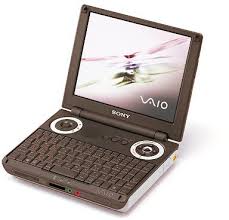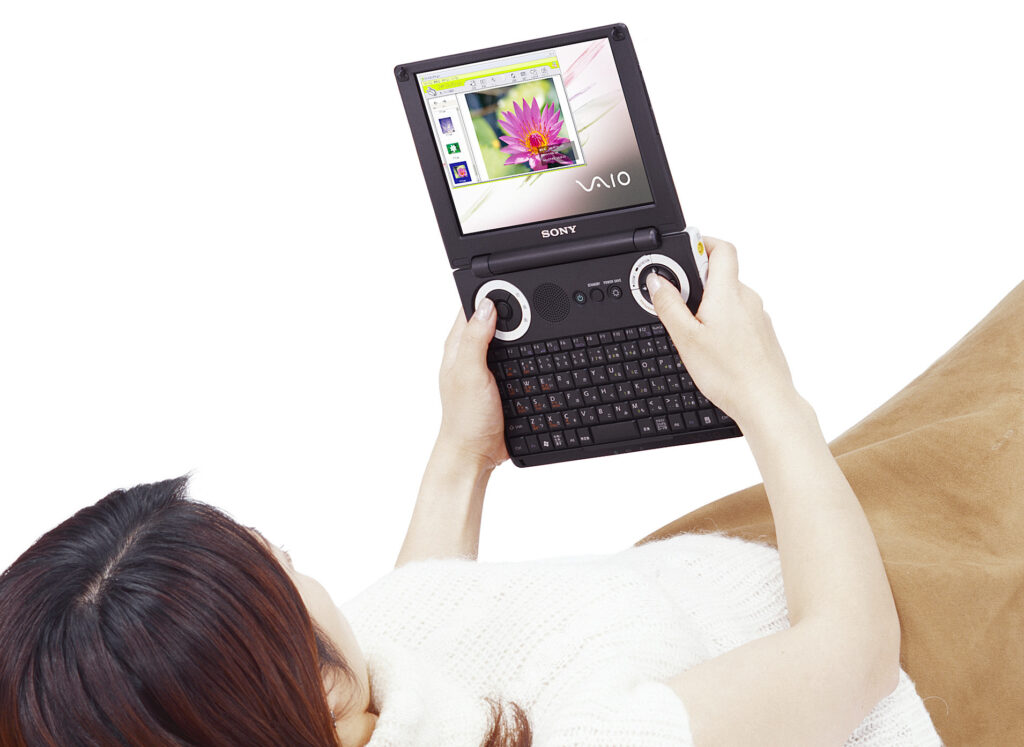Posted on July 3, 2021
Sony Vaio U101
Sony produced an impressive amount of ultra portable devices.
The Vaio U101 is yet another from the UMPC series, available in Japan only, offering incredibly small portability for it’s time.
Quick Links:
Historic Overview
The Sony U series was well renowned for being amongst the smallest independent computing devices, forming the so-called Ultra Mobile PCs (UMPC) category.

Before the netbooks appeared during the mid-2000s, the Sony UMPC avant garde set the tone for ultra mobile computing for several years.
Despite rather hefty pricing, Sony delivered innovative concepts and was not shy in trying out even new approaches and form factors with this series.
While the U101, much like the U1/U3, follow a familiar look of shrinked down laptops, the U50 und U70 series went more into directions of handheld and tablet style PCs.
A commonality for some of the earlier Sonya UMPC was, that they did away with Intel CPUs in some models, and incorporated the Transmeta Crusoe instead. The Crusoe, not being a native x86 CPU, implemented the x86 compatibility using code morphing, which, as one might guess, was propably not the best from a speed-wise perspective when compared to native x86 CPUs. However, the Cruoes was adept for low power consumption, which at the time, was in fact a big deal.
It would still take a while for power efficient Intel CPUs to appear. In 2003, the later U series models saw the transition to Intel Celeron M/Pentium M CPUs with clock speeds up to 1.1 GHz.
The U101 sports a Celeron at 600 MHz, with 256 MiB RAM and a 30 GiB hard drive, a typical setup for the time. The 7.1″ LCD features up to 1024×768 resolution. Overall, a very leightweight device already at 880g and a dimension of 178x139x34 milimeters, and a foreshadowing to later Netbook-style devices. All in all, a good companion for computing on the go, to which the built-in WiFi and Ethernet options greatly contributed.
One special thing about the U101 is it’s pointing device. Rather than using a trackpad or a trackpoint in the usual positions below or in the keyboard center, it features a thumb-controllable trackpoint and mouse buttons in the upper right corner, just beneath the display hinges.
On the upper left-hand corner, a similar control pad was available, from which different functions, i.e. for multimedia, can be accessed.
Combined the fact that the display can be moved within a 180 degree angle, this allowed U101 to be held and used like a handheld gaming consoles.

Specs
The PHINTAGE Collection currently holds a VAIO PCG-U101.
| Vendor | Sony |
| Model | Vaio PCG-U101 |
| Released | 2003 |
| Original Streetprice | TBD |
| Weight | 880g |
| Dimensions | 178 mm × 139 mm × 34 mm |
| Builtin Display | 7.1″ LCD, 1024×768 |
| Builtin Battery | yes |
| CPU | Intel Celeron @600 MHz |
| RAM | 256 MiB |
| Storage | 30 GiB HDD Memory Stick M slot |
| Network Support | Ethernet and WiFi built-in |
| USB | yes |
| Video Output | yes, VGA, with proprietary connector |
| Other | 1 Audio out 3.5mm 1 Audio/Mic in 3.5mm 1 USB 1 iLink 1 DC out port (for optional devices) 1 PCMCIA (Cardbus 32bit) slot |
| Operating System | Windows XP |
| Overall Condition | new / MINT |
| Restoration Parts needed | none |
| Benchmark Results | SiSoft Sandra 2004, CPU benchmark: CPU ALU Dhrystone: 2436 MIPS CPU Whetstone FPU: 828 MFLOPS CPU Whetstone ISSE2: 1058 MFLOPS SiSoft Sandra 2004, Multimedia benchmark: Integer x4 ISSE: 5645 it/s Float x4 ISSE2: 6229 it/s SiSoft Sandra 99, CPU benchmark: CPU Dhrystone: 2314 MIPS CPU Whetstone: 801 MFLOPS SiSoft Sandra 99, Multimedia benchmark: Integer ALU: 1411 it/s Floating Point FPU: 968 it/s Norton Utilities 3.1: Computing Index, relative to IBM/PC: N/A Norton Utilities 4.5: Computing Index, relative to IBM/XT: 2740.2 Norton Utilies 8.0: CPU Speed: 1634.8 |
Gallery
Coming soon.
Downloads
Coming soon.
